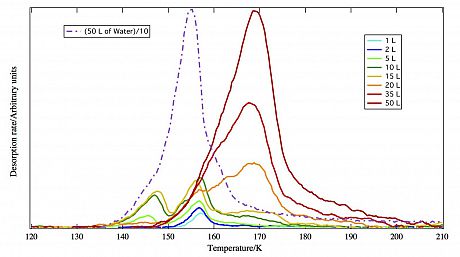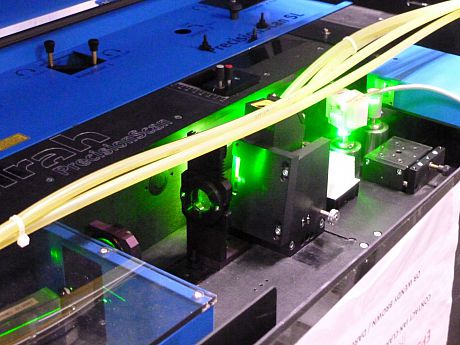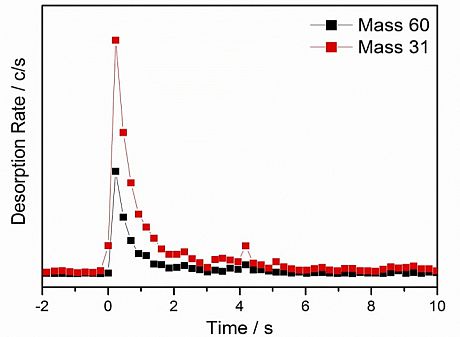Our current research involves looking at the processing of model interstellar ices adsorbed on graphitic surfaces. Ices can be processed by thermal, UV and electron sources, leading to both desorption and reactions in the ices. The group also has a collaboration with UCL to build a new experiment to look at the chemistry of pure radicals adsorbed on surfaces.
Complex organic molecules
The focus of the groups most recent research is the study of the stability, formation and processing of complex organic molecules (COMs) adsorbed on grain surfaces. We have undertaken a detailed, interdisciplinary, study of the chemistry of the C2O2H4 isomers (glycolaldehyde, methyl formate and acetic acid) in collaboration with Serena Viti (UCL) and Paul Woods (Belfast).

Thermal processing
We have recorded TPD data for a very wide range of astrophysically relevant molecules, both small and large. We have desorption energies/orders for many species that can be used in astrophysical desorption studies. If you are interested in our data, please see the table for the data we have and get in touch with us.

For the COMs, TPD data (AA TPD picture) are recorded to show the way that the isomers trap in, and desorb from both the carbonaceous surface and from an amorphous solid water (ASW) ice layer, as illustrated by the TPD spectra shown for acetic acid desorption from a water ice surface.
Ultra-violet processing
In a project originally initiated by Daren Burke (formally at UCL and Sussex), we have also undertaken a detailed study of the UV photo-desorption and reaction of a range of molecules (simple and more complex) on the graphite surface. These experiments used both a YAG pumped dye laser (from the EPSRC laser loan pool - Burke and Brown “UV induced chemistry of complex organic molecules in space” ) and a broad band Xe arc lamp to investigate the effect of UV light on model interstellar ices.

For example, TPD and PID data for methyl formate, recorded following irradiation with laser light at 224 nm, show that methyl formate is very photoactive at this wavelength.

Studies of the water phase transition
Another current project that we have underway involves using a combination of RAIRS and TPD to study the LDA to HDA phase transition in amorphous water ice, using RAIRS and TPD to study the trapping of various probe molecules such as CO2 and CS2.


